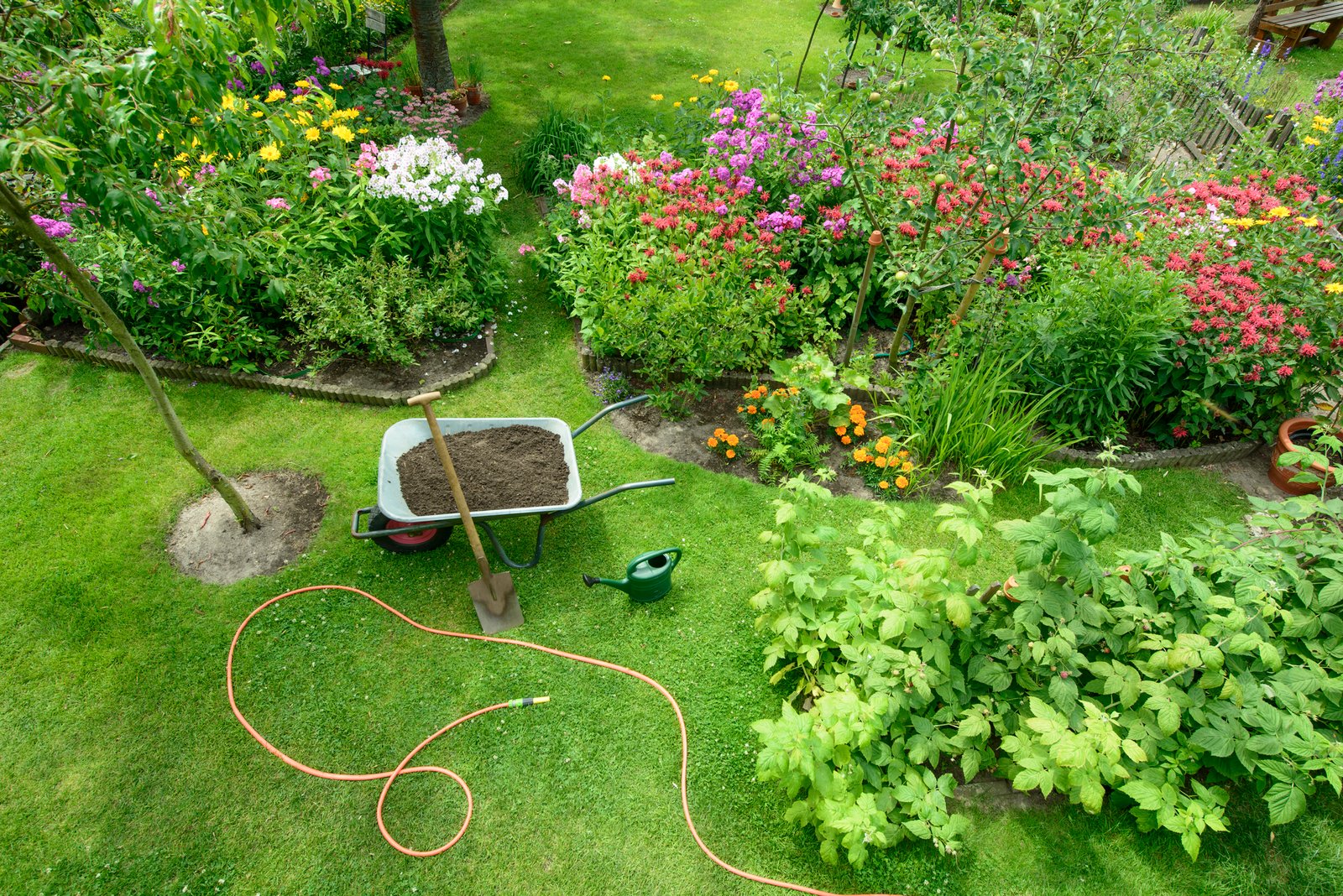Just because plants are natural it doesn’t mean that growing them in your backyard makes them eco-friendly or good for the environment. People often use natural elements or eco-friendly substances in their landscaping but arrange, choose, and maintain them in unnatural ways. It’s not difficult to abstain from committing unreasonable gardening errors.
Here’s the manner by which to make low-support, eco-friendly garden beds. Organic gardening is exceptionally famous at the present time. There are unlimited articles and books on it. As an agronomist, there are a few standards of eco-friendly gardening I can impart to you. Be it on the field, in the pot, or in the garden, there are a few standards of how nature works that are generally evident.
If you get behind these, you will actually want to develop your plants without utilizing any synthetic substances that hurt you and the planet. Eco-accommodating gardening will bring you solid food and the delight of seeing nature flourish. At last, it will save you a great difficult situation, work, and cash, as well!
Reduce Lawn Size
After watching the rising in pollution in the environment we should decide to rather spend our free time enjoying the time in your little backyard sanctuary that we had created instead of toiling at the weekly ritual of cutting and maintaining a lawn.
We started shaving away the yard by supplanting the grass with islands of multi-reason trees, shrubs, ground cover, and mulch. We were consistently mindful so as to make delicate bends so the grass could be scaled without sponsorship up the trimmer.
We additionally utilized strong ground covers and greeneries in territories under trees. Really soon as opposed to requiring hours, cutting time was decreased to an hour or so and we didn’t need to water or treat, on the grounds that the grass that we left was in the “right” place for it to develop.
Make a Compost Pile
Utilizing non-meat kitchen scraps and other overabundance plant materials to make rich dark soil is something that all gardeners ought to do. Rather than putting leaves and grass clippings on the control to go in the landfill, it bodes well to place them into a fertilizer heap or do a sheet treating the soil in the garden. Fertilizer heaps are not difficult to make or you can purchase instant ones.
If you don’t have numerous trees, at that point simply experience your neighborhood the day preceding the junk is gotten and gather the pleasantly stowed abundance that the neighbors put out.
Another great treating the soil alternative is worm treating the soil. By adding red wiggler worms to your fertilizer heap or setting up a different worm receptacle, you will have much more extravagant soil than with normal fertilizing the soil strategies.
Use Native Plants
Sneezeweed, solid-leaved verbena, and coreopsis draw in honeybees, local honey bees, and butterflies to the garden. Plants that are local to your region are now acquainted with the occasional changes and the times of the dry season as well as flooding.
They are hardier and require considerably less upkeep time than the imported intriguing plants. Numerous local plants have palatable natural products, berries, nuts, or roots. Models incorporate walnuts, blackberries, wild blueberries, plums, crabapples, red mulberry, groundnut, and numerous others.
Keyhole Garden
Keyhole gardens were intended to save water in dry areas, the idea consolidates lasagna, raised and organic gardening with a lasting fertilizer canister. Customarily the individual gardens are roundabout with a 6-6 1/2 foot breadth. A wire barrel-shaped fertilizer receptacle sits in the center. The sides and soil profundity is 2 to 3 feet. A pie-molded wedge is cut in one section so the fertilizer canister is open.
The theory is that the garden is self-treating by means of the fertilizer receptacle. The rich fertilizer tea bags into the soil each time the garden is watered. This kind of manageable garden has been fruitful in numerous zones including Africa and West Texas.
We are currently introducing a changed keyhole garden, utilizing the materials that we have close by. Our own will be more rectangular on the grounds that we have a few sheets from a deck that will be repurposed to make the sides. Little sticks and dead branches will be on the base layer to help in seepage.
Cardboard, paper, and other non-sparkly paper will form the following layer. Chicken compost and soil in addition to leaf shape, roughage, and pine needles will form different layers. We’ll finish it off with some topsoil. We desire to have it done by fall with the goal that it can age and be prepared for spring planting.
Reduce your carbon footprint
You may have understood that most things eco-accommodating gardening spin around the soil. By keeping your soil ripe, you make hummus. In the event that you have a garden, perhaps the greatest advance you can take to help the climate is to pick without peat fertilizer.
Peat is a kind of soil found in wetlands. Most gardening substrates you can purchase are comprised of peat. Peat forms at a pace of 1 mm each year, however, we use it at a far more prominent rate than it takes to form it. This implies that wetlands are by and large irreversibly obliterated to create peat for our gardens!
This harms valuable wetland environments as well as generally adds to environmental change, also. Why? Wetlands cover 3% of land territory, yet store twice as much carbon as all forests on Earth taken together! The corruption of wetlands prompts ozone-depleting substance emanations that outperform even the discharges from avionics traffic!
Animal Havens
Giving shelter and food to fuzzy, agreeable animals locally broadens the regular environment into your backyard. Prefab Metal Buildings are the best for animal shelters.
Fundamental considerations are feathered creature feeders and houses. Do a smidgen of examination online to pick the correct dovecote, as various plans draw in various types of fowls. You can paint any aviary you buy to commend or differentiate different decorations and plan components in your yard.
Winged creatures are only the start — making other creature asylums will deal with specific nuisances and give a lot of energizing minutes when you’re tasting some tea and wondering about natural life right external your window.
There are a couple of essential increases that will pull in a wide range of critters to your yard. Heap a few rocks in a radiant spot and plant shade-lenient ground cover under trees to draw in reptiles, turtles, and frogs. Look into natural life territory development to find out about drawing in squirrels, hares, butterflies, bats, and more to your yard.
Solar Lights
Enlighten your yard without wiring and save a group on your energy bill all the while! Solar lights charge during the day while the sun is out, and radiate a delicate, delicate sparkle at night to keep your porch, overhang, or deck splendid enough for the following round of mixed drinks or an evening time film screening.
However long the territory where you introduce a solar light gets a fundamental measure of direct daylight during the day it can light up your yard the entire night. Numerous solar lights will utilize a solitary LED, while more costly alternatives will incorporate both a LED and a little halogen spotlight bulb.
If you are an imaginative DIY type there are almost interminable decorative prospects with solar lighting. You can put a solar light inside a jack-o-lamp, tiki torch, or hanging installation to make disposition lighting for any season. Balance solar lights along with entrances, or tunnel a few solar lights in the underbrush of your garden for a mystical look.
Create an Eco-Friendly Garden










